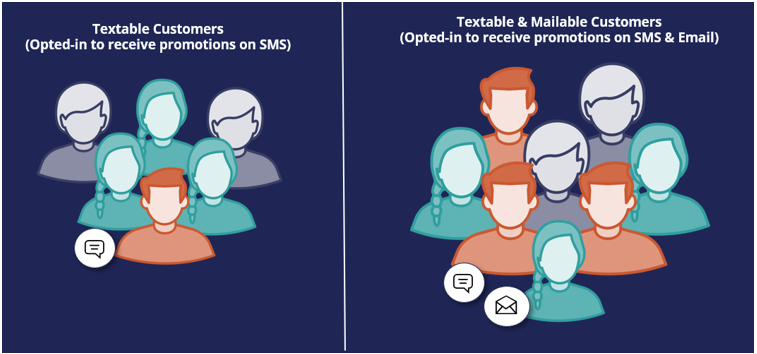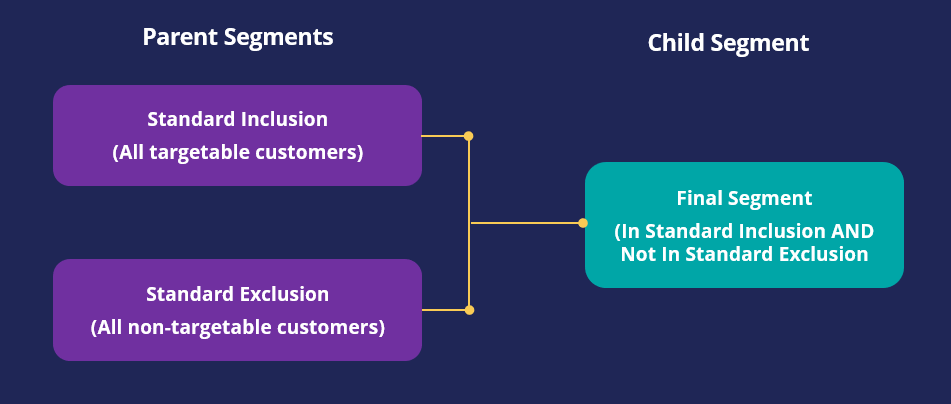
Segmentation
What are segments?
In Pega Customer Decision Hub™, the audience is a list of potential target customers, implemented using the segment component. A segment is a reference to a database table containing a list of customer IDs that match specific criteria.
In the always-on outbound paradigm, the Pega brain evaluates the Next-Best-Action for each of the customers identified in a segment, which contains the list of potential customers to whom you want to send messages.
This set of customers is known as the starting population. The customers in this group will be further qualified through eligibility, applicability, and suitability criteria configured in Next-Best-Action Designer.
Criteria in a segment
To select a starting population, you apply a few high-level criteria to a segment. It’s best practice not to get too granular at the segment level, rather use eligibility, applicability, and suitability rules configured in Next-Best-Action Designer to fine-tune your criteria once the starting population has been selected.
You can define one or more conditions that must be true for a customer to be included in a segment.
For example, to send emails related to a credit card offer to a target audience, you should first define a criterion that will filter for customers who have opted-in to receive promotional emails.
Segments hierarchy
A segment can reference a “parent” segment, enabling you to create a hierarchy of segments.
For example, you can create top-level segments that identify common lists of customers for exclusion or inclusion in various “child” Segments. Standard top-level segments allow global communication rules to be implemented by forming the basis of customer lists that automatically adhere to these rules. The rules can include, for example, standard exclusions, which are the core customers who should not be contacted, or standard inclusions, which are the core customers who may always be contacted. The resulting customer lists can be used as the starting point for creating the final segment.
If changes are made to global rules, the definitions of the standard top-level segments can be modified accordingly, and as a result, every segment that references them will automatically be re-aligned to the new rules.
This Topic is available in the following Modules:
If you are having problems with your training, please review the Pega Academy Support FAQs.
Want to help us improve this content?



